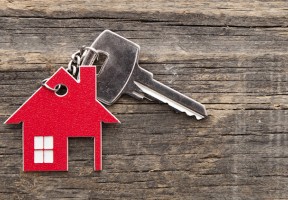

By: Elia Reyes, Bank of America, Chicago
Edited by Lawndale Bilingual News
Over time, the definition of the American Dream has changed. Still, the desire to own a home remains a defining attribute. This rings especially true for Hispanic families, who are purchasing homes at faster rates than other minority demographics. In fact, an annual report by the National Association of Hispanic Real Estate Professionals found the homeownership rate in Hispanic communities was 47.1 percent in 2018, marking the largest year-over-year net gain since 2005. Here in Illinois, the Hispanic homeownership rate is more than 52 percent.
Unfortunately, barriers to homeownership still exist, particularly in Hispanic communities. Access to credit, limited educational resources and sufficient savings to fund ongoing mortgage payments and maintenance are real concerns for prospective homebuyers. So, the question remains: how do Hispanics make their homeownership dreams a reality? The answer: determine what’s right for the family, ask the right questions and create a plan. Following these steps can put homeownership well within reach.
Determine what’s right for the family
Although homeownership is the goal for many individuals, it is not always the right option, or the right time. Renting – with its flexibility and limited maintenance costs – may be more affordable. But renting can also create a sense of discomfort and impermanence, and rent costs can increase without warning. In some cases, however, purchasing a home might cost less than renting. In addition to the opportunity to build equity, homeownership provides a sense of freedom and control though, as with anything, there are certain challenges to consider. The responsibility for maintenance and repairs – ranging from roofing to plumbing to landscaping – falls squarely on the homeowner. Preparation for the unexpected is essential, as is making sure you’re comfortable with the ongoing responsibility associated with homeownership.
Ask the right questions
Once you’ve made the decision to purchase a home, the next step is to ask the right questions to fully understand the home buying process. Key considerations should include knowing how much home you can afford, understanding your credit score and learning your options. First, prospective homeowners must understand how much they can comfortably afford. As a general rule of thumb, the mortgage payment, which includes taxes and homeowner’s insurance, should be no more than 30 percent of the pre-tax household income.
Next, homebuyers must know their current credit score since it could impact their mortgage interest rate and ability to qualify for a loan. Your financial institution should be able to provide up-to-date information, but credit information may also be requested annually, at no cost, through one of the three credit bureaus by visiting AnnualCreditReport.com. If your credit score is low, consider pausing the home buying process until you can improve your score.
Create a plan
Once you know what’s ahead, you can create and execute a plan to move beyond the role of homebuyer and into the role of homeowner. First, create a budget. The budget should include a detailed account of all revenue streams – income, retirement accounts, investments – and all expenditures, from rent to vehicle payments and entertainment costs. Then, create a line item on the budget that outlines the anticipated cost of homeownership, including planned and unexpected maintenance costs.
Next, if necessary, go to work on improving your credit score with two goals in mind: first, keep the total debt you owe below the total amount of credit available to you; then, reduce your debt-to-income ratio by making greater payments toward high-interest loans and credit cards. Do not close your credit accounts, as your credit history plays a significant factor in determining your score. Finally, and most importantly, take advantage of the plethora of resources available in your community. Chicago is home to several nonprofit housing organizations dedicated to providing assistance to first-time homebuyers, and Bank of America provides real-time access to financial education through its Better Money Habits curriculum, available online in both English and Spanish. With the right support and guidance, homeownership can be a reality for every family in every community.








